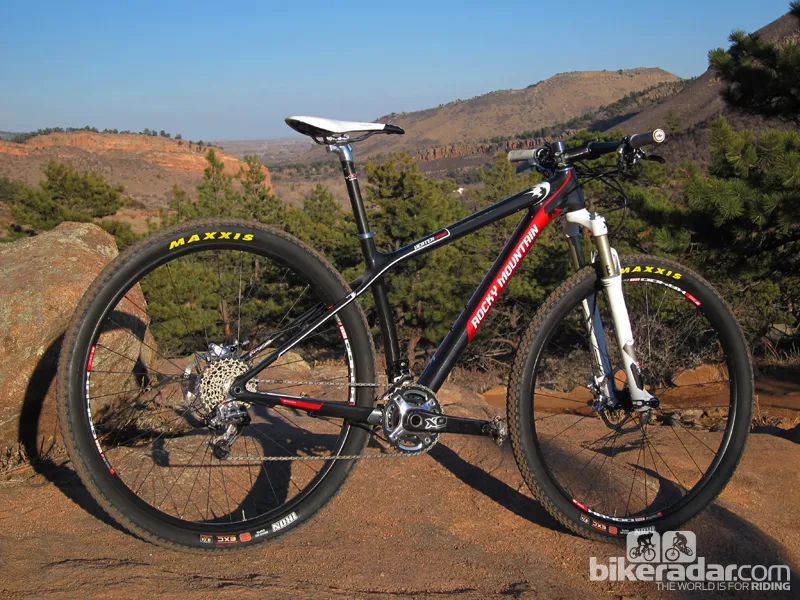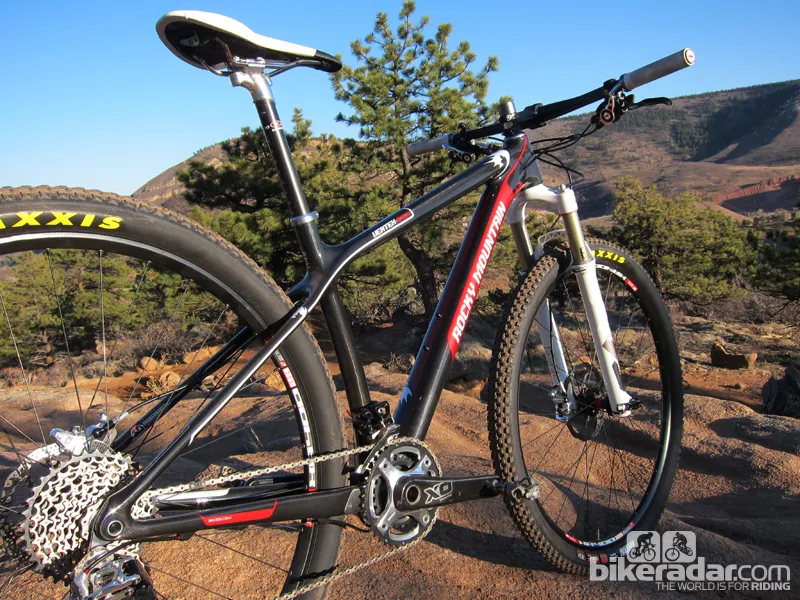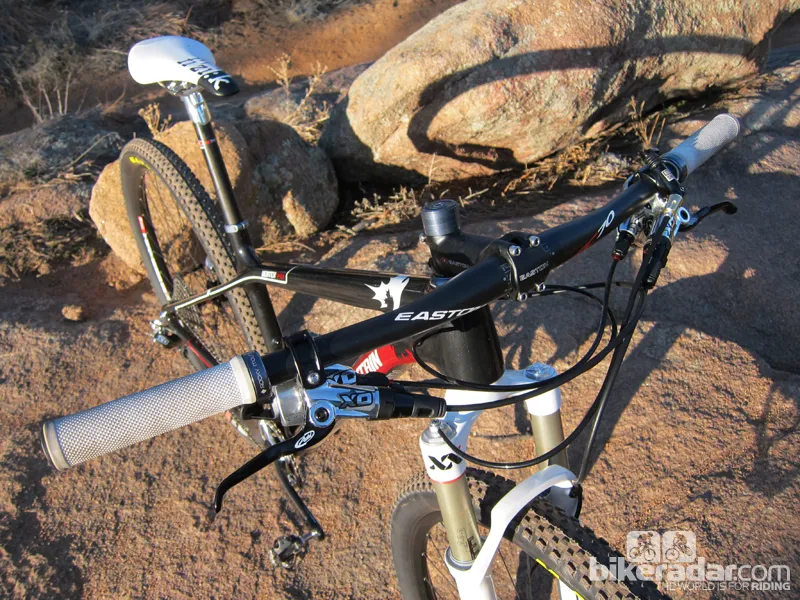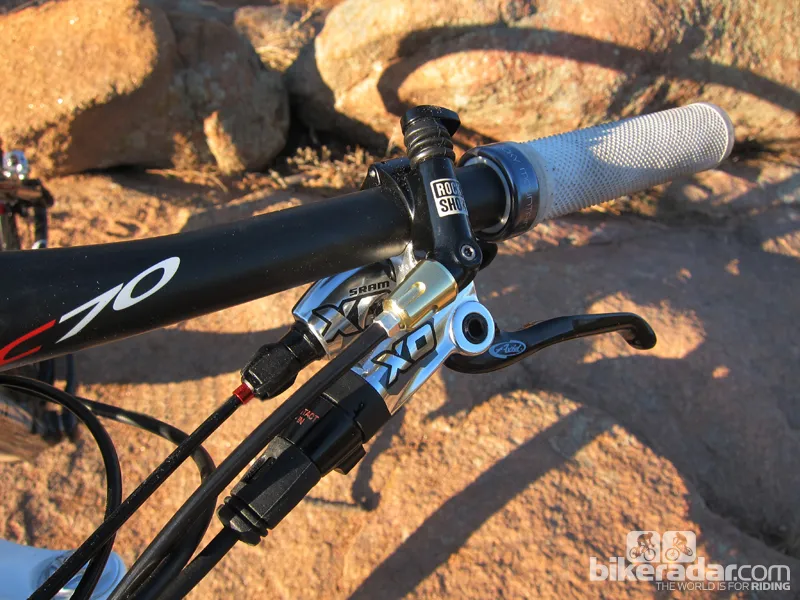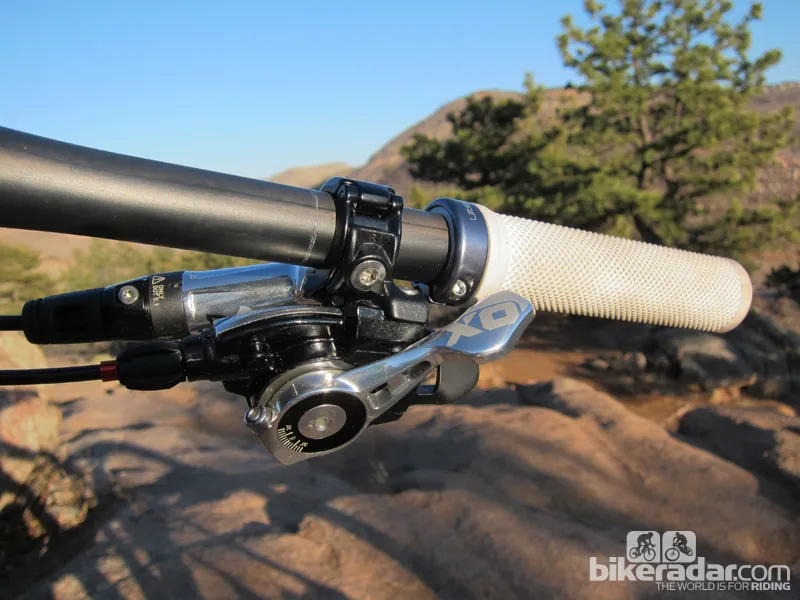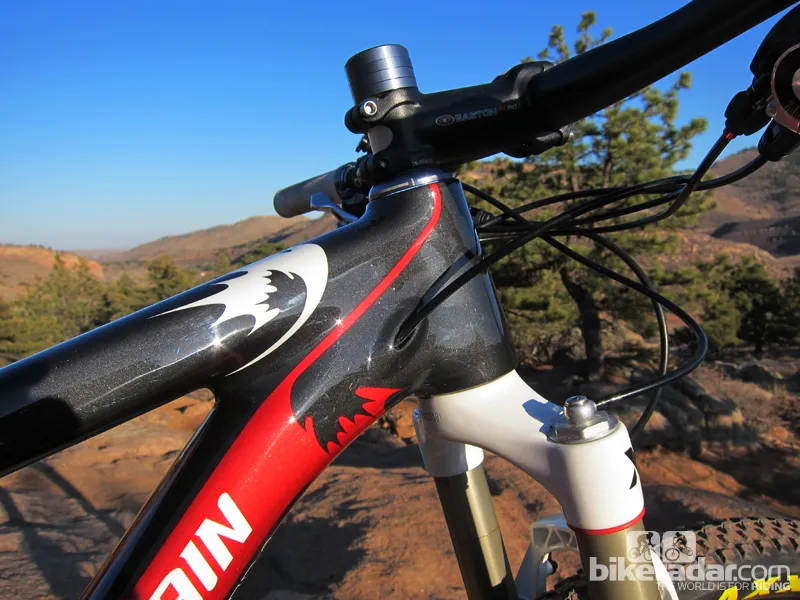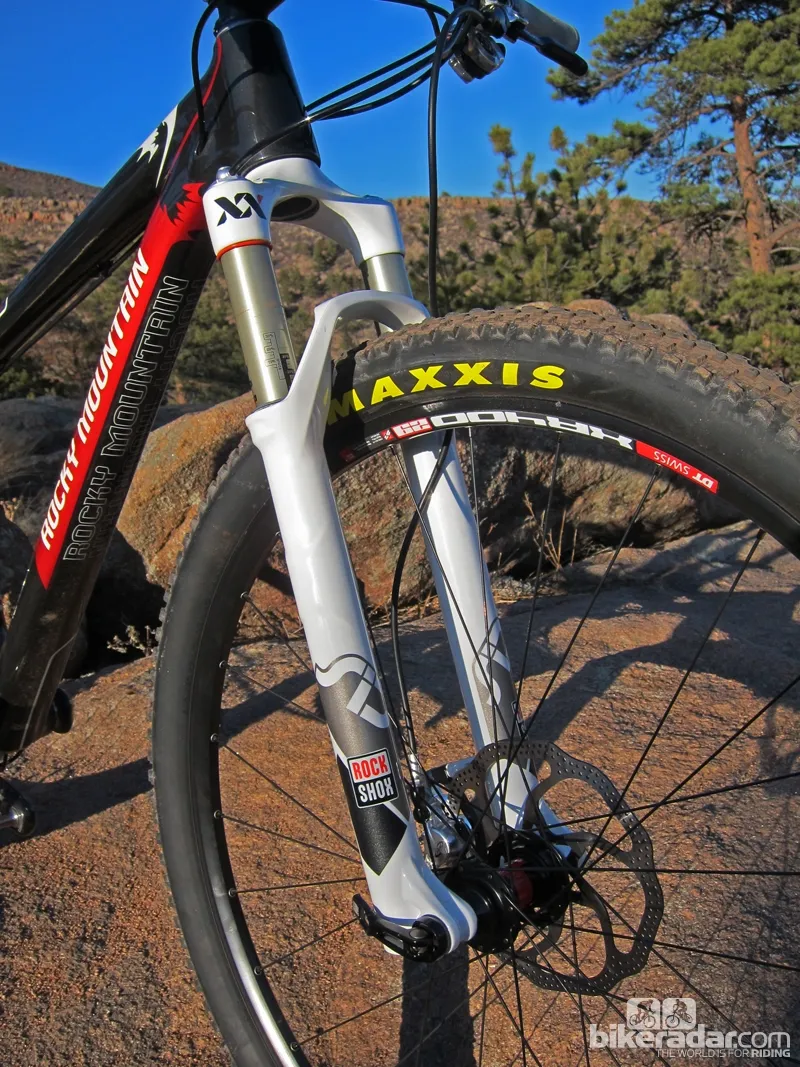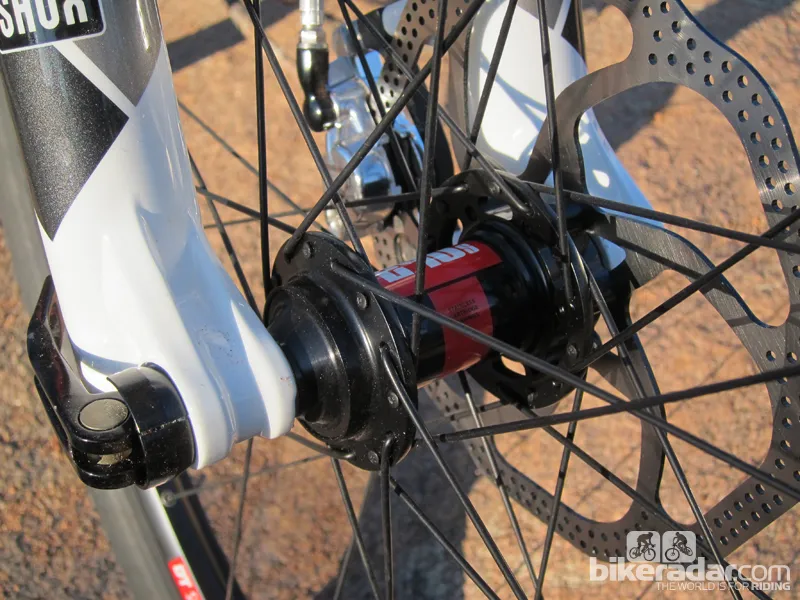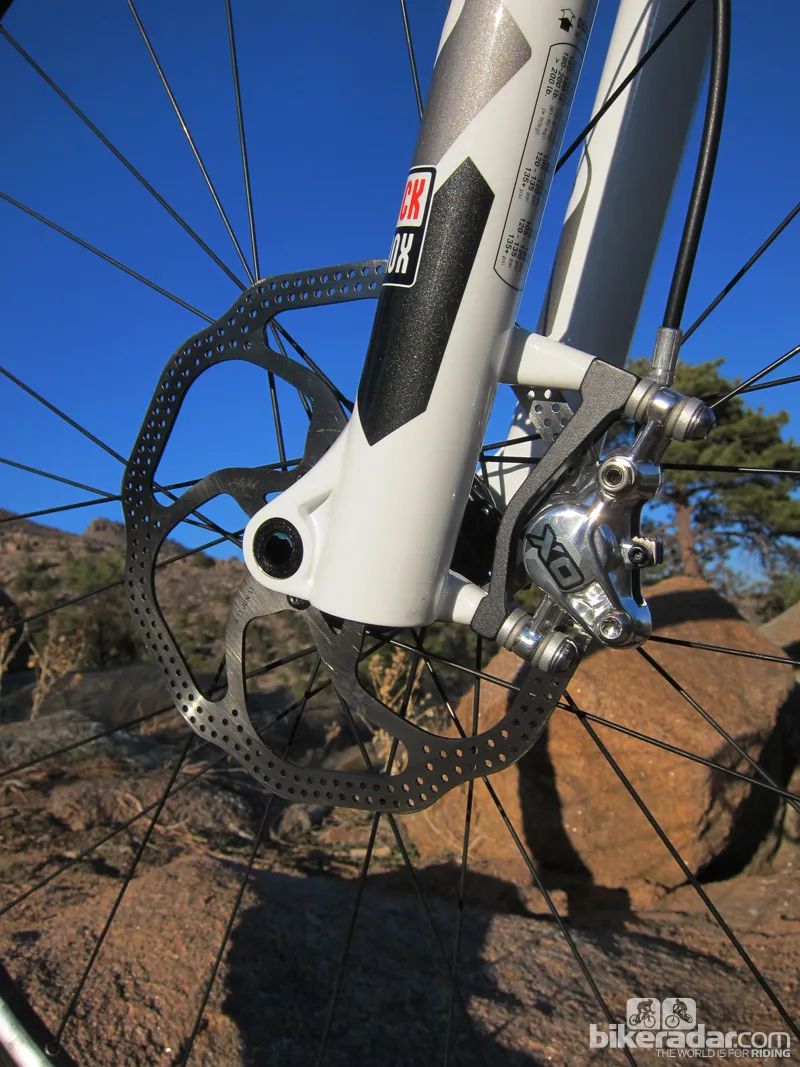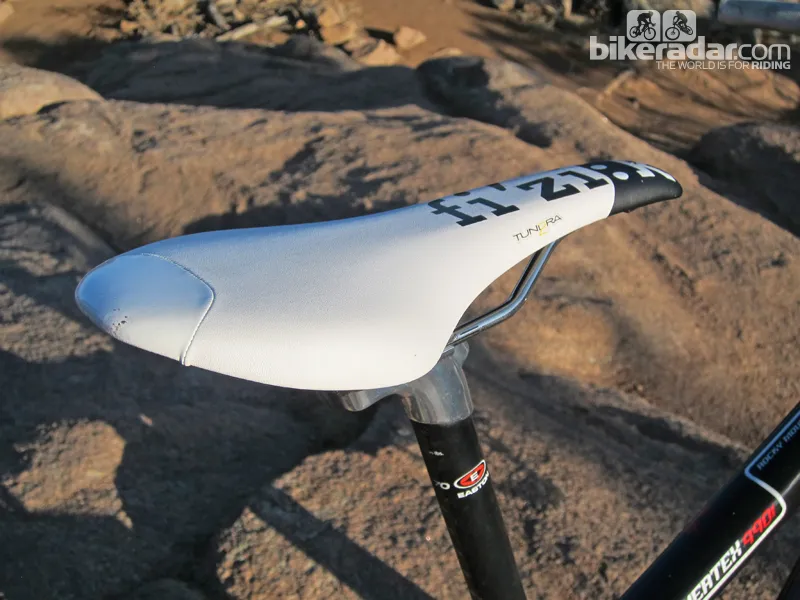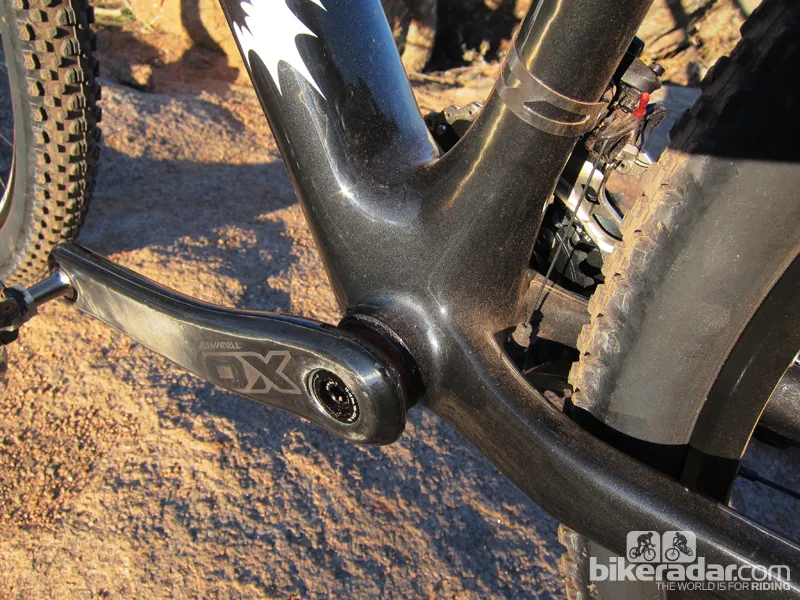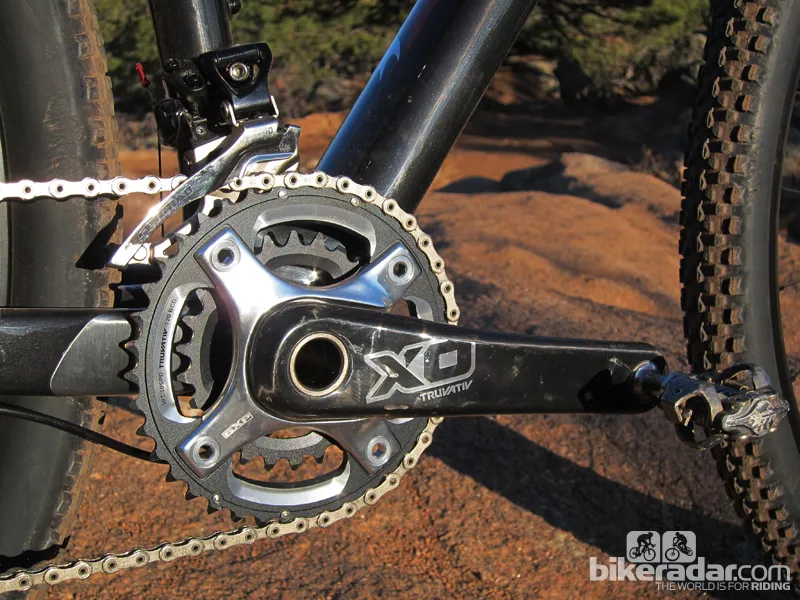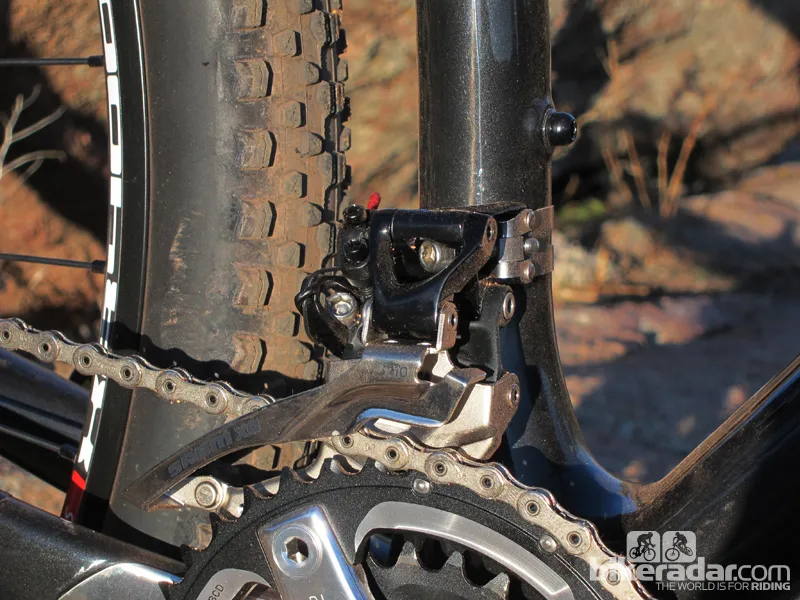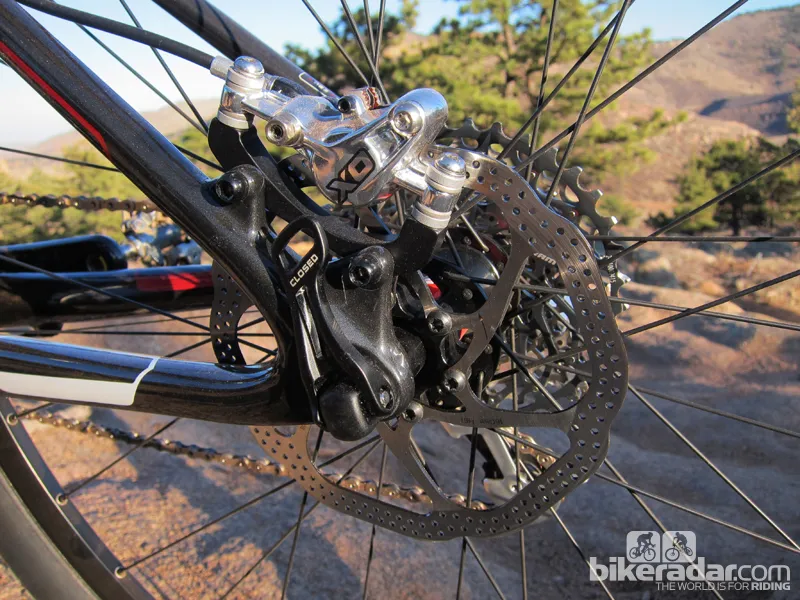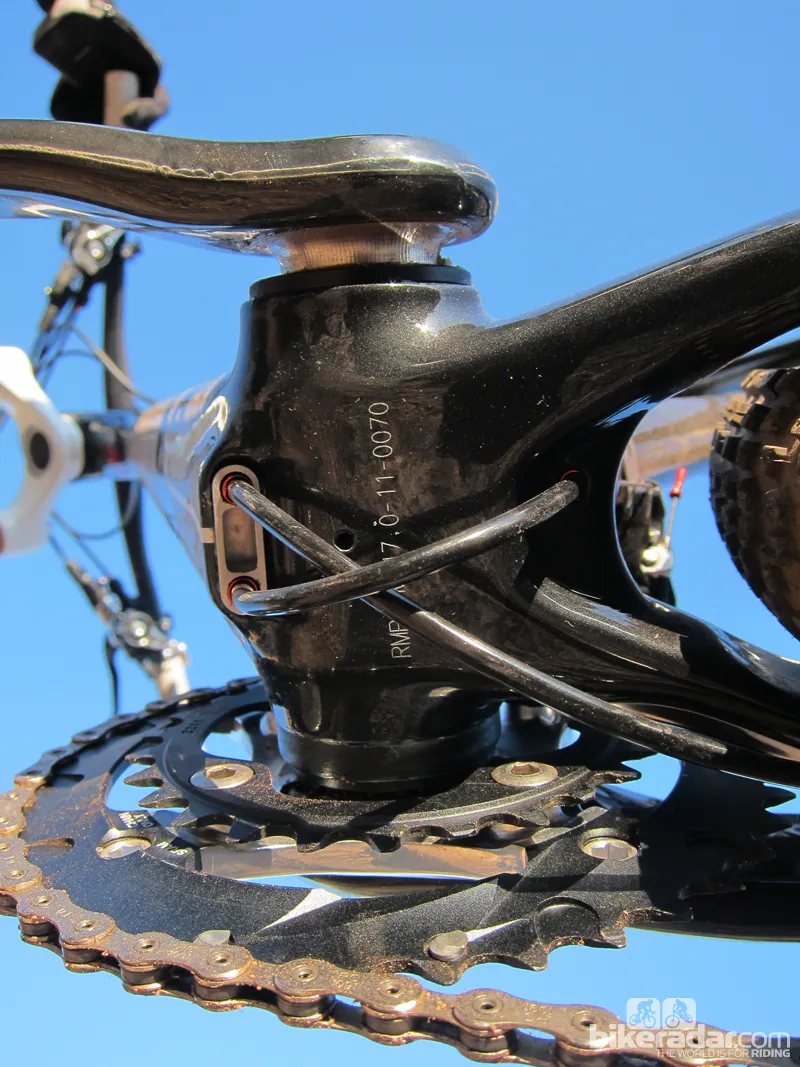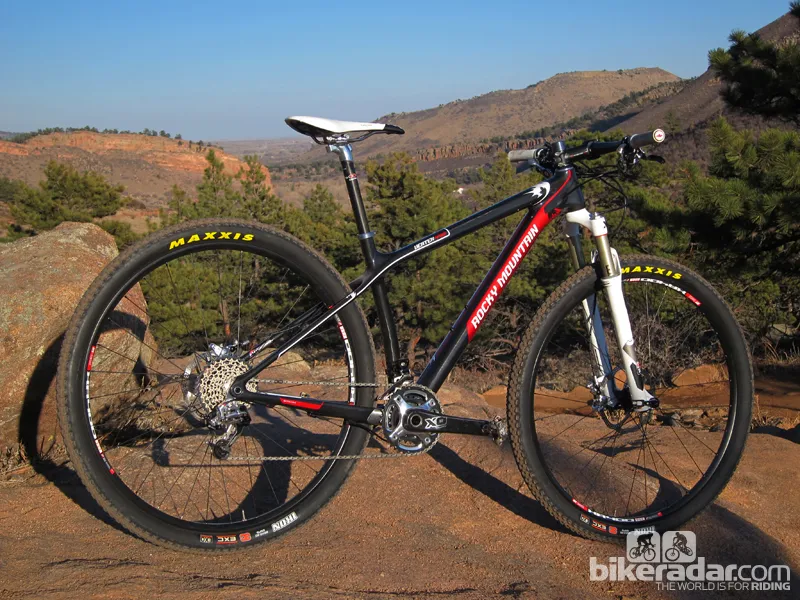Rocky Mountain are a company that once prided themselves on 26in-wheeled hardtails, but they completely gave up the segment for 2012. Purists might still be protesting, but there's no real reason to. The big-wheeled Vertex 990 RSL 29er is faster and more capable than any of Rocky Mountain's classics could ever have hoped to be.
Ride & handling: Straight-line speed and unusual agility
Twenty-niner hardtails are generally lauded for their ability to steamroll over trail obstacles, but agility isn't often a trait they're associated with. The Vertex 990 RSL, on the other hand, is one of the nimblest 29ers we've ridden.
You don't so much feel 'inside' the bike or 'on top of it' – rather, the bike just feels natural, with an eager ability to change direction without losing the high-speed stability so many 29er buyers value. In fact, shut your eyes and you could almost imagine you're on an old Rocky Mountain Blizzard.
Rocky Mountain credit the agility to subtly tweaked frame geometry, which features a middle of the road 70.25-degree head tube angle but a taller than usual bottom bracket – 1.25 degrees slacker and 8mm taller than Specialized's Stumpjumper.
On paper, the two figures conflict somewhat, but on the trail they're just right – the slacker front end keeps the Vertex from feeling too nervous while the slightly higher center of gravity makes it easier to throw the bike around. Impressively short 433mm chain stays allow for easier manuals and bunnyhops, too.

The seat tube is slightly kinked to accommodate the stubby chain stays
The Vertex 990 RSL isn't just a treat in the twisties, either. It's also extremely efficient under power, with the carbon fiber chassis' huge down tube, top tube and chain stays plus through-axles front and rear – rare on a hardtail but we hope to see them more often moving forward.
There's negligible side-to-side or torsional flex when you get on the gas or charge through rock gardens and, generally speaking, the 990 RSL is a highly accurate, lively and snappy bike on which to blast around.
Thankfully, there's still a hint of give to take the edge off rough patches of trail, thanks to the wide and flat seat stays and slender 27.2mm seatpost. Admittedly, the Vertex isn't as eerily smooth as the Scott Scale 29 RC. But it's certainly more comfortable than the Stumpjumper, for example, and left us feeling fresher than we expected for a hardtail after long rides.
The subtly muted rear end also helps when you're clawing up technical climbs or bombing tricky descents at high speed. In both cases, we were able to maintain traction – and our composure – better than we can on more unyielding chassis, and even managed to best our record on a rocky and twisty local descent we'd previously conquered on a 5in travel trail bike with 26in wheels.

The chain stays are big but the seat stays much slimmer, for better traction over bumps
Fit-wise, there's nothing to complain about. Coupled with the slightly taller bottom bracket, the stubby, 100mm-long integrated head tube, 0-degree stem and wide, flat bar combine for an appropriately aggressive position we could happily maintain for hours.
Frame & equipment: Up-to-date techniques but heavier than expected
Rocky Mountain keep pace with the times with the Vertex 990 RSL's SmoothWall construction. This uses internal molds instead of the more conventional inflatable bladders, for a more consistent interior finish plus better fiber compaction and resin infiltration. Few people care what the inside of the frame looks like, of course, but the touted benefits are increased strength and stiffness with reduced weight.
In fact, you'd be hard pressed to find anything other than carbon fiber in the frame, what with molded-in headset bearing seats, a carbon fiber tube for the 92mm-wide, press-fit bottom bracket shell, carbon fiber rear dropouts and IS-style disc caliper tabs.
Omitting all that metal pays obvious dividends on the scales – actual frame weight for our medium-sized test sample was just 1.12kg (2.47lb) including the seatpost collar, water bottle bolts and rear derailleur hanger. Removing those bits brings the figure down to 1.07kg (2.36lb) – not far off Rocky Mountain's 990g claim, which is likely for a raw frame without paint or the bonded-on stainless steel down tube and chain stay guards.
Speaking of guards, we were initially concerned that the down tube is wholly unprotected on the underside. But after months of test riding and countless rocks kicked up by the front tire, we're happy to report only slight cosmetic damage. Something like Cantitoe Road's laminated Shelter tape still wouldn't be a bad idea, though.

Our unguarded down tube remained undamaged despite numerous rock strikes
Additional frame features include internal derailleur cable routing with refreshingly smooth paths and easy access, molded-in zip-tie guides for the externally run rear brake housing, and dual bottle mounts.
Our only gripe involves the threaded nut for the rear through-axle, which is cleanly tucked away into the driveside dropout and is adjustable for lever position. Otherwise, though, it's unsecured, so it can easily fall out when the wheel is removed.
For the most part, Rocky Mountain have nailed the build kit on the Vertex 990 RSL, with its complete SRAM X0 2x10 group (in the gleaming polished color option, no less), a 100mm-travel RockShox SID 29 XX fork, Easton cockpit and seatpost and Fizik Tundra 2 Kium saddle.
Shift performance was positive and precise, the brakes were reliably strong and easy to control (though with some squawking from the rear) and the fork was well controlled, smooth and admirably rigid.
Some might find the Tundra 2 Kium saddle too firm for a hardtail, though, and the Rocky Mountain lock-on grips are similarly devoid of cushioning (we changed to ESI silicone foam rubber grips and were much happier).
We had mixed feelings on the rolling stock. Save for the so-so 10-degree engagement speed, the DT Swiss 240s hubs were tough to fault, what with their excellent build quality and smooth rotation. While we would have preferred something lighter, DT's XR 400 29 rims are reasonably stiff and stayed true throughout testing.
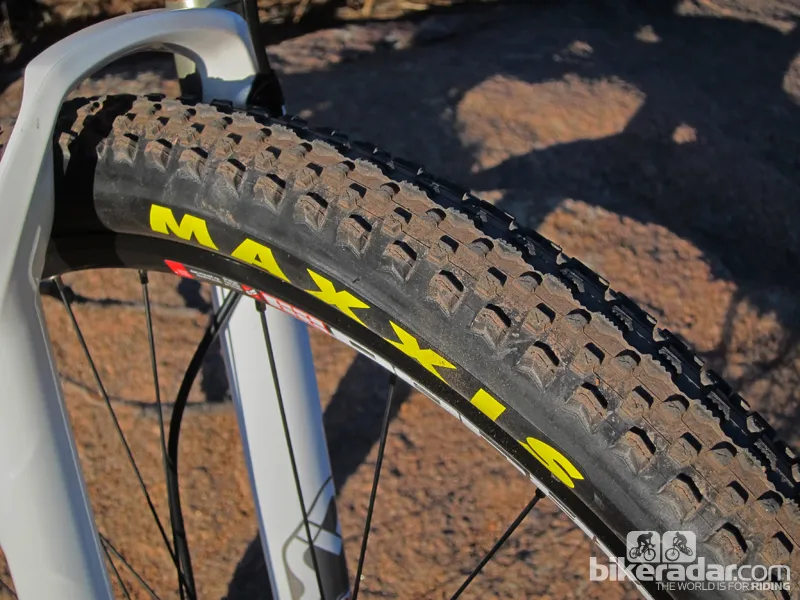
The stock Maxxis Ikon tires are surprisingly grippy but not fat enough
We loved the Maxxis Ikon tires for their light weight, fast roll, friendly limits and surprisingly good grip on all but very loose surfaces. But we desperately wished for more volume. Maxxis label the tires as 2.2in but they're barely two inches across at their widest point. Ultimately, we swapped to a low-knobbed, true 2.2in model and gained a substantial amount of comfort and much more traction – we went faster as a result, too.
Total weight in stock form was just 9.56kg (21.08lb) without pedals – 100g lighter than the XX-equipped Trek Superfly Pro, which is also more than US$1,000 more expensive.
Given the ride quality, impressive stiffness, brilliant handling and mostly flawless spec, this bike was hard to let go.
